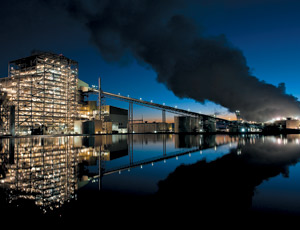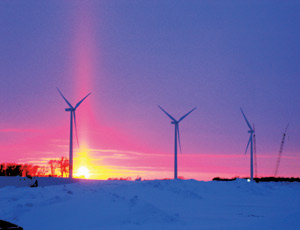The ongoing crisis at Japan’s Fukushima Daiichi nuclear powerplant quickly triggered demands from politicians and activists from California to New York to Germany and elsewhere to shut down aging nuclear reactors, but replacing existing nuclear generation isn’t as simple as flipping a switch.


At best, taking nuclear powerplants off line might encourage more development of renewable generation and push distributed generation, but only years or decades from now. At worst, taking a nuclear powerplant or two off line could cause spikes in wholesale electricity prices and problems with electric reliability.
“It’s not realistic to prematurely retire nuclear power,” says Mark Gabriel, senior vice president and executive director of strategy practice for Overland Park, Kan.-based Black & Veatch.
Each nuclear reactor provides about 1,000 MW of electricity, and in the U.S., reactors operate about 90% of the time. Once the plants are built, they’re cheaper to run, because the fuel is cheaper.
Only natural-gas-fired plants and coal plants can provide comparable base-load power. Coal is being removed from the equation as new Environmental Protection Agency regulations crack down on plant emissions, public sentiment turns against the fuel and lenders are unwilling to finance new coal plants.
“In today’s environment, a coal plant is pretty much a non-starter,” says Kiah Harris, director of energy consulting and technology services for Burns & McDonnell, Kansas City, Mo. As utilities shutter older plants and replace base-load power feedstock, “the default really becomes natural gas,” Gabriel says.
Complicated Planning
While it might be feasible to shut down a nuclear powerplant in a state—such as Illinois—with easy access to transmission and the nation’s current energy surplus, it would be difficult in an area in which transmission and generation are limited, such as Vermont Yankee or New York’s Indian Point, says Harris. Scrapping those two controversial nukes, replacing the power and maintaining electric-grid reliability would require building new generation on-site or nearby, Harris says.
In either scenario, prices for electricity would increase, says Jonathan Siegler, chief financial officer for Bluescape Resources and a former strategist at coal giant TXU Corp. before it was bought out by Energy Future Holdings.
“When you pull out the most efficient, most cheap source of electricity, prices will go up—it’s a question of how much. If you pull Indian Point out of the resource stack, that’s a major change in prices,” he says.
Siegler says that construction of any type of new power generation will be more expensive than the price of current power in the U.S. market, which currently ranges from $20/MWh to $55/MWh. Natural-gas-fired generation, however, is the most competitive, costing the equivalent of about $57/MWh.
Natural-gas replacement would be cheaper and faster. A combined-cycle natural-gas plant takes about two years to build, says David Eppinger, vice president for the power group at Irving, Texas-based Fluor Corp. Much of a natural-gas plant is built on the assembly line, cutting both delivery time and the construction schedule, he says.
Eppinger says the growing availability of liquefied natural gas makes gas plants an option for utilities worldwide.
There is a downside to relying too heavily on natural gas, however. Some predict the abundance of shale gas will stabilize the price of natural gas, now at about $6/MMBtu, until 2025. Beyond that, though, no one is comfortable in estimating a price, says Aneesh Prabhu, director of U.S. utilities, power and project finance for Standard and Poor’s. (Standard & Poor’s and Engineering News-Record are both owned by the McGraw-Hill Cos.)
The price of natural gas could skyrocket, leaving utilities with an expensive resource. “It’s na�ve to think that gas isn’t volatile,” Sielger says.
Coal’s Remaining Role
While coal is now out of favor, its use for base-load power isn’t disappearing. “For three to four to seven years, realistically, gas [will be] the fuel of choice. There’s not a whole lot of options,” Gabriel says. “But in five to 10 to 15 years, we’ll have clean coal and integrated gasification.”
While it is now technically feasible to build plants to capture carbon dioxide and gasify coal, the cost to build such plants on a large scale is prohibitive, say David Harris, vice president, and Rich Chapman, strategic projects director for clean coal technologies, both of Black & Veatch. Such plants are tied to the price set on carbon dioxide, through either a carbon tax or a cap-and-trade system.
“The speed of how it progresses is dependent upon how much money is made available,” Chapman says. “There’s no commercial reason for utilities to do this in the absence of regulatory requirements.”
Worldwide, China, India and other countries are still building “lots and lots” of coal plants, some with the intention of retrofitting carbon-capture technology when it is commercially available, says Jeff Merrifield, vice president of Baton Rouge-based The Shaw Group’s power group.

Post a comment to this article
Report Abusive Comment